“And the diamond princess went to a cave that was full of diamonds.
– Yes. Now I’ve seen them too and I like them very much and I will go look for some more diam…
– And I pick out the first diamond, right?
– Ok.”
Maneuvered by two puppeteers in grey costumes that remind one of cartoon T-Rex dinosaurs, the doll-children retell stories. (Almost) all stories start off as fairy tales, but they tend to trail off almost immediately and turn into child specific free-associative thinking, crossing from the universe of stories over to the way children understand notions of time, space, family and social relationships.
In Cornelui Porumboiu’s most recent film, Comoara, the father randomly picks out the diamond necklaces without touching them or even really looking, while the shopkeeper is the one who carefully takes the jewelry using gloves; the next scene shows the children who find the diamonds in the old chest that the father brought; they reach between the sparkling floor boards, take the jewels and run off to the slide.
By sheer coincidence, I saw Ciprian Mureșan’s Untitled (2015) and two other movies – the one by Corneliu Porumboiu and A cara que mereces by Miguel Gomes – in which the decomposed, perverted traces left by fairy tales in adult lives are as visible as dinosaur tracks from another time. There is no concept-factual connection – excluding the magical function of diamonds in our lives – between Mureșan’s video and the other two movies. But this coincidence of mine, encountering the dark side of fairy tales that thrive upon the symbolic violence of social life, made me see each work in a certain way.
Untitled (2015) – which was screened only once in Bucharest at the end of June, as part of the Working from Language exhibition at Salonul de Proiecte and then picked up by Art Basel, as part of “Parcours” – is not what you would traditionally call a performance, but more of a (animation) show which was also implied by the space in which it was presented at Basel (an Italian scene basically). Based on a strictly followed script, Untitled doesn’t personally engage the two actor-puppeteers (Lucian Rad and Enikő Takács), there is no communication system between the performers and the audience and it can be easily reproduced in space and time. It is a type of spectacular autonomy (that was ruffled in the Bucharest exhibition space but was later restored in Basel’s “black box”) that is specific to theatre – if only the live version wouldn’t be in a discursive relationship with the partially corresponding homonym video.
Untitled “the video” is the 3rd in a series that began with Dog Luv (2009), which follows the script by Saviana Stănescu, and Protest against me (2011), written by Gianina Cărbunariu. The series investigates various forms of social relationships using theatrical structures. What ties these works together – they each use different types of animation or dramatic language (and not because Stănescu and Cărbunariu have different approaches: Dog Luv is a dialogue between characters and dogs, while Protest… is a monologue and Untitled is based on a improvisation workshop attended by small children) – is the use of dolls as a vector of communication. This communication – more specifically, the hijacking (almost violently) or mismatching the communicational functions of language and performative dimensions of these so called speech acts – is in itself the major theme of this tryptic.
Taking the situations and actions that were already filmed in Untitled and placing them on a live stage has less strict theatrical rules because it has a direct relation with its corresponding video and thus it loses its artistic autonomy simply because it instates a dual perception over the same situation – its immaterial and video edited state and its “real”, fluid and embodied state. And the ambiguity regarding “the original” – whether the show reenacts the video or if it is the other way around, in case the two don’t perfectly overlay – is, in a way, just as destabilizing as the language slips within the stories.
The script for this show/performance (that somewhat follows the video) was based on the improvisation workshops for small children – they use hand puppets (of both genders, various human typologies and mobile mouths) that take on the role of the children, while the puppeteers themselves have scary costumes with monster heads and big mouths and can intervene at any time as the voice of authority in this childish game. The unfinished words and sentences, the stutters and breaks in dialogue are kept in, not so much for their “authenticity” but rather as visible marks from the process of “fabricating” the story language – the two performers are “pillars of language”, trainers for those who seek to learn the language (and their memory is always playing tricks on them). If at the beginning it appears that gender distribution doesn’t matter, it quickly gets the spotlight once the stereotypical roles come into play (the diamond “history” with its bracelets, earrings and crowns is part of it). Family hierarchies are seen through a childhood perception, where you can instantly change your age.
Even if I were to look at it without actively thinking of Dog Luv and Protest against me, Untitled is like a journey through a laboratory where, in spite of the innocent children’s’ games, the violent specter takes the form of the “adults” previously seen in the other two videos. The free puppet play (that don’t have the same mobility as the ones in Dog Luv and Protest against me) and the performers’ interventions (a puppeteer would put the puppet in his mouth) create a menacing atmosphere, describing a unmaterialized horror, and a physicality that is that more substantial during the live show. Ciprian Mureșan’s work has the feel of a perverted story out of A thousand and one nights: it’s as if the doll-children’s survival depends on their own ability to continuously improvise without making too many mistakes. Just like in the grown-up world.
Ciprian Mureșan and Enric Fort Ballester, Working from Language, is at Salonul de Proiecte in Bucharest between 28 May – 12 July 2015.
POSTED BY
Iulia Popovici
Iulia Popovici is a performing arts critic and curator. She is editor for the performing arts section at the Observator cultural weekly cultural magazine (Bucharest). She has written about the alterna...
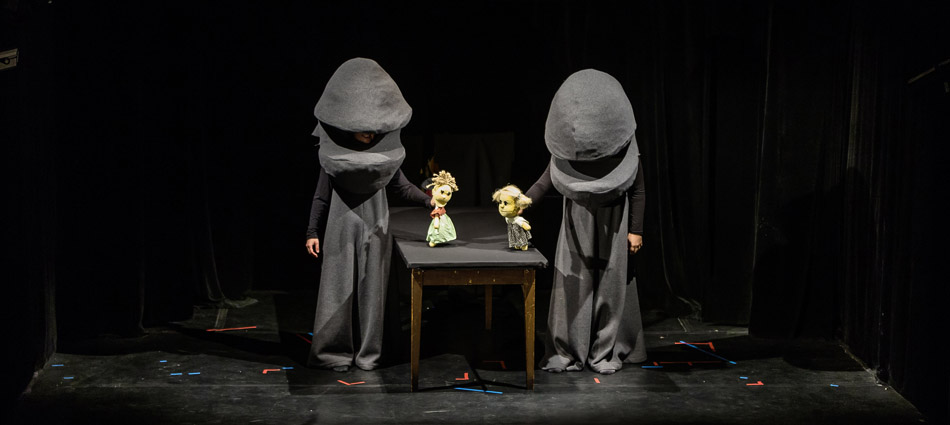
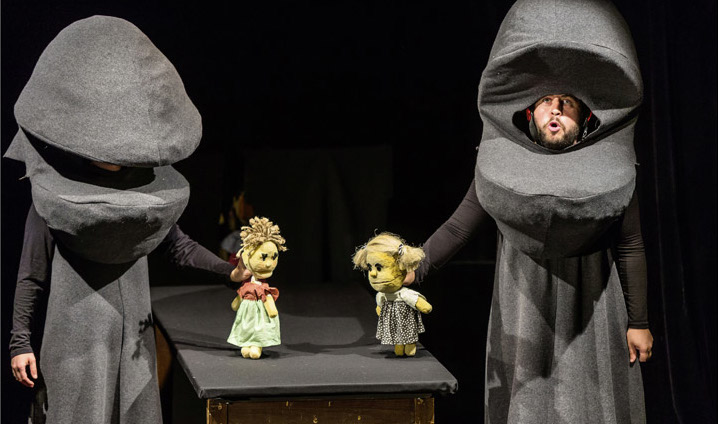
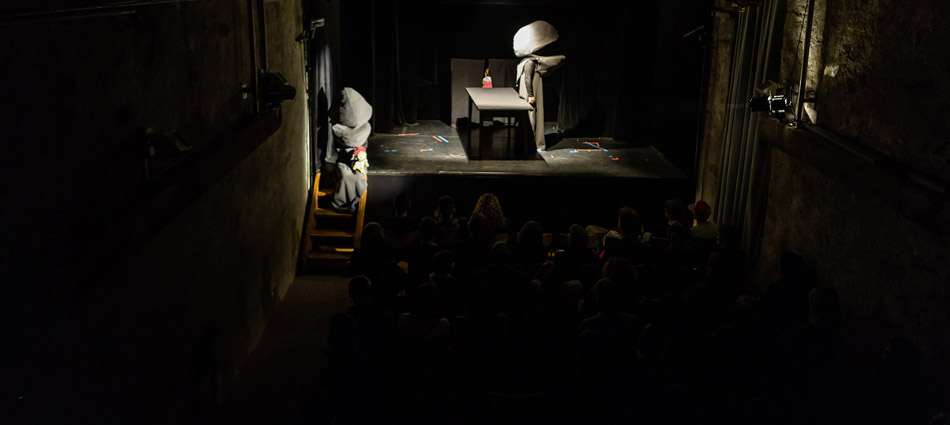
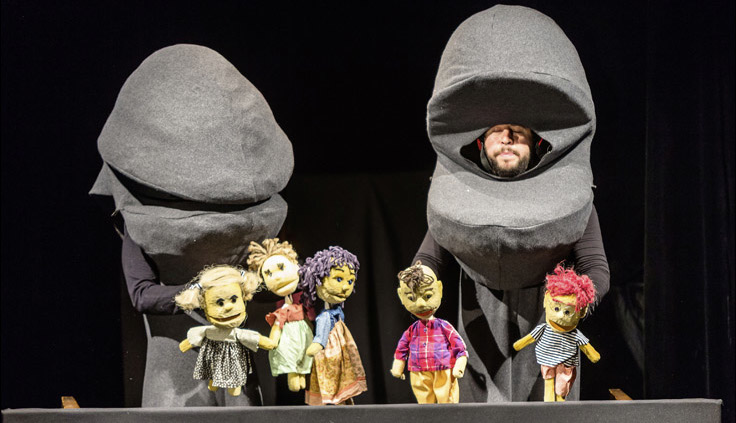
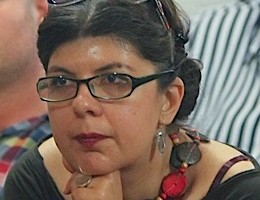
Comments are closed here.